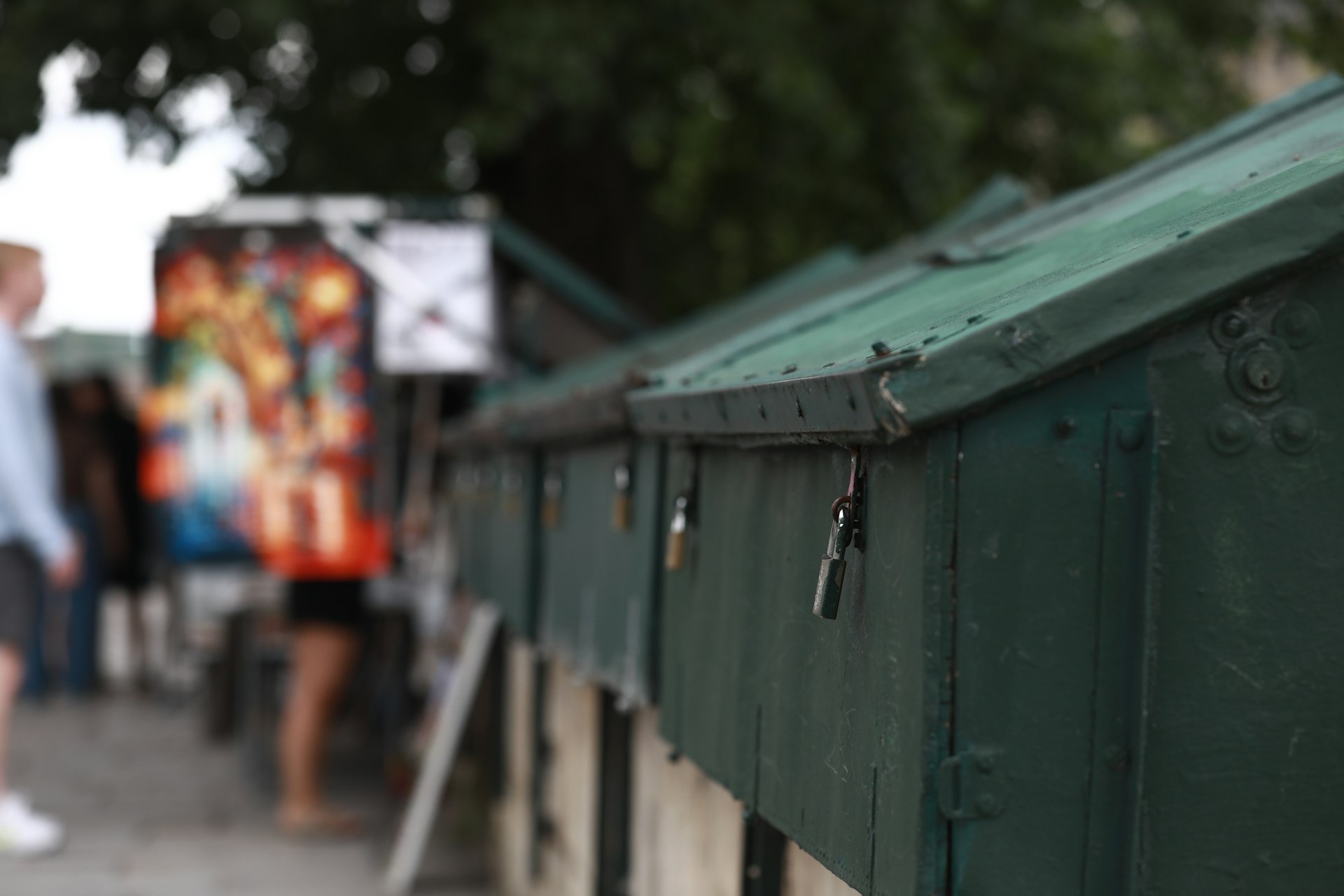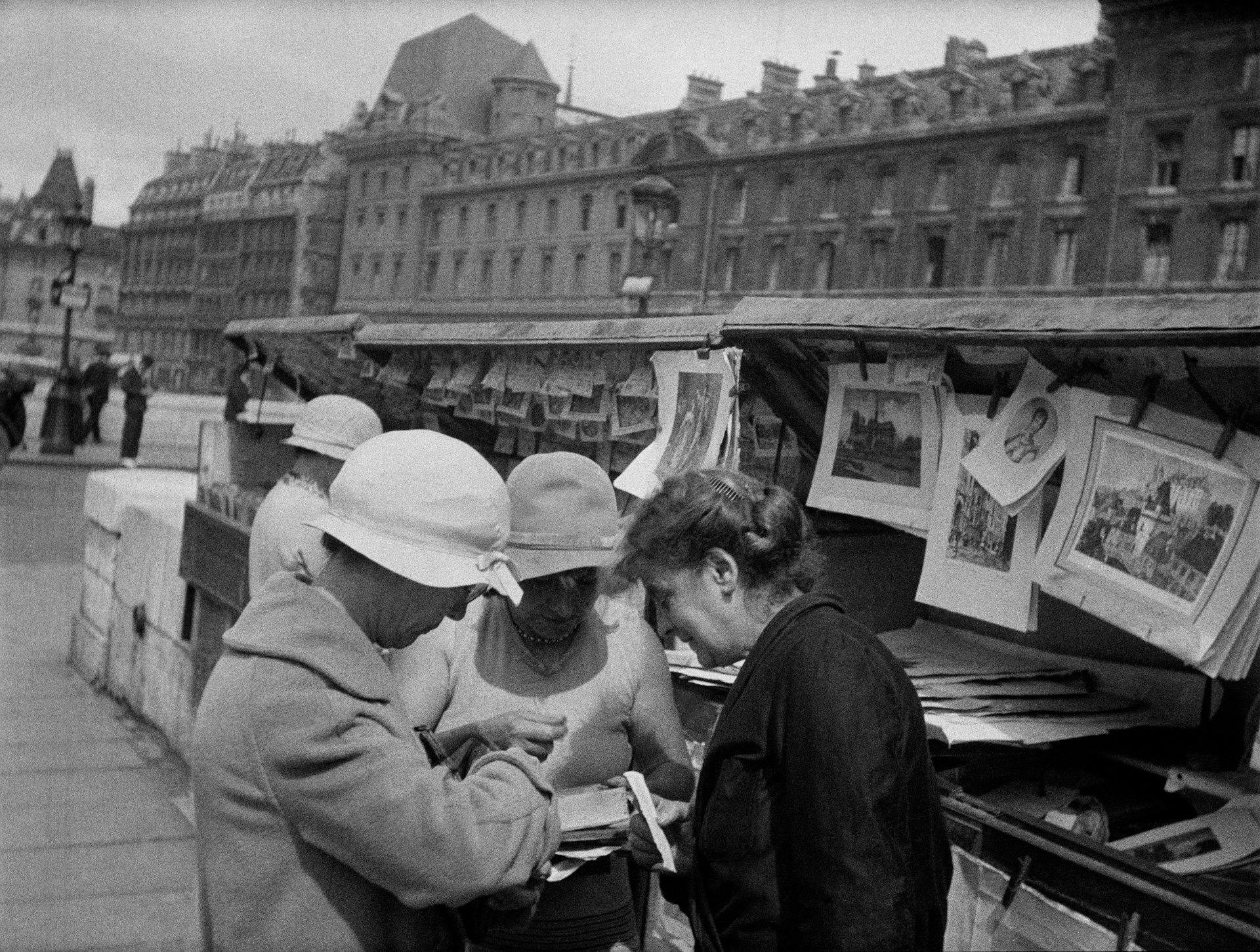
The world’s largest open-air bookshop is set against one of the most picturesque backdrops on Earth: Paris.
Indeed, you could say that the riverside booksellers and their iconic green book stalls are as much a fixture of the Seine as the Eiffel Tower is of the city’s skyline. But a battle is brewing between the city and its booksellers, who have been warned that the kiosks will have to be taken down for the Paris Olympics – an unprecedented move since the book stalls took up full-time residence along the Seine more than 160 years ago.
Get the inside scoop on the latest cultural happenings all over the world delivered weekly to your inbox with our email newsletter.  The bouquinistes’ stalls look much the same today as they have for over 100 years © AFP via Getty Images; Miguel Medina / AFP via Getty Images
The bouquinistes’ stalls look much the same today as they have for over 100 years © AFP via Getty Images; Miguel Medina / AFP via Getty Images
A tradition for five centuries
Every morning that Paris’s riverside booksellers (bouquinistes) lift the lids of their stalls and set up for the day, they carry on a rich literary tradition that began 450 years ago, when their predecessors hawked books from baskets slung around their necks, or spread their wares on trestle tables along the quays of the Seine.
The inauguration of the Pont Neuf (“New Bridge”) in 1606 also provided book peddlers a lively outdoor marketplace, space in which they jockeyed for customers alongside teeth pullers, jugglers, dog shearers, prostitutes and charlatans whose cure-all remedies claimed to heal everything from poison to lovesickness. Yet the success of the hawkers who sold secondhand books, distributed political pamphlets and staged public readings angered local bookshop owners. In 1649, the peddlers were banned from Pont Neuf and driven away. The ban would be the first of several attempts to chase away the quayside booksellers over the centuries.
In 1721, an ordinance threatened to fine and imprison peddlers who sold new and old books in the open air; in the 19th century, Baron Haussmann wrote the quayside bouquinistes out of his massive plan to transform Paris. It wasn’t until 1859 that the booksellers were finally assigned fixed lots along the Seine. In 1891, the vendors were allowed to leave their goods in stalls overnight, cementing their permanence on the streets of the French capital.
Around 1900, boxes were painted the same “wagon” green hue as the Wallace water fountains and Morris advertising columns, creating coherence with the rest of the city’s street fixtures. The stalls look largely the same as they did more than a century ago.
 With the 2024 Paris Olympics opening ceremony taking place along the Seine, the beloved book stalls may be facing removal © Mohamad Salaheldin Abdelg Alsayed/Anadolu Agency via Getty Images
With the 2024 Paris Olympics opening ceremony taking place along the Seine, the beloved book stalls may be facing removal © Mohamad Salaheldin Abdelg Alsayed/Anadolu Agency via Getty Images
A potential disruption to the Paris 2024 Olympic Games?
Yet that is poised to change next summer when the city hosts the summer Olympic games. Citing security risks, Paris police have warned the 240 booksellers that 570 of the 900 boxes will have to be dismantled. Along with serving as potential hiding spots for explosives, police say they’re potential safety hazards and will impede the flow of pedestrian traffic. The opening ceremony for the summer games next year takes place on the Seine river, and the upper quays are expected to draw hundreds of thousands of spectators.
Discussions are ongoing – the city has offered to renovate and reinstall damaged stalls, and also to relocate the booksellers – but news that the city’s open-air bookshop could disappear during the games has renewed interest and mobilized public support for the beleaguered booksellers, who have had to contend, in quick succession, with Yellow Vest protests, the pandemic and competition from online retail giants. To make up for declining sales, booksellers are currently allowed to sell souvenirs in addition to rare and antiquarian books, vintage posters, postcards, stamps and old coins.
 An open-air bookstore with a view © EricBery / Shutterstock
An open-air bookstore with a view © EricBery / Shutterstock
How to enjoy the bouquinistes right now
Spanning the length of two miles on either side of Seine, from the Quai François Mitterand to the Quai de l’Hôtel de Ville on the Right Bank, and the Quai Voltaire and the Quai de la Tournelle on the Left Bank, the bouquiniste trail takes flaneurs past the Notre Dame Cathedral and the Louvre, with views of the Seine and Eiffel Tower in the distance.
While they’re a Paris treasure, the bouquinistes are sometimes wrongly identified as being a Unesco World Heritage asset: in fact, it’s the banks of the Seine that were inscribed on the World Heritage List in 1991. The booksellers were instead inscribed in France’s version of the intangible cultural heritage list in 2019, a precondition for qualification for Unesco status.
Seine bouquinistes throughout the years
1920s
 Frenchman Edouard Dodeman holds a newspaper and stands by his bookstall on the quayside of the Seine as patrons browse through nearby offerings, Paris, 1920s. Mr. Dodeman’s wife, Elaine, the former Lady Barlow, operated Paris’ only English-language bookstand for 26 years until her death. Here Mr. Dodeman has just reopened the shop after Mrs. Dodeman’s funeral © FPG/Getty Images
Frenchman Edouard Dodeman holds a newspaper and stands by his bookstall on the quayside of the Seine as patrons browse through nearby offerings, Paris, 1920s. Mr. Dodeman’s wife, Elaine, the former Lady Barlow, operated Paris’ only English-language bookstand for 26 years until her death. Here Mr. Dodeman has just reopened the shop after Mrs. Dodeman’s funeral © FPG/Getty Images
1930s
 Fashionable women search for change as the purchase books along the Seine in 1932 © Keystone-France/Gamma-Rapho/Getty
Fashionable women search for change as the purchase books along the Seine in 1932 © Keystone-France/Gamma-Rapho/Getty
1940s
 A French bookseller helps German soldiers find books on July 9th, 1940 – during the Nazi occupation © Keystone-France/Gamma-Keystone/ Getty Images
A French bookseller helps German soldiers find books on July 9th, 1940 – during the Nazi occupation © Keystone-France/Gamma-Keystone/ Getty Images
1950s
 A woman examines a potential purchase from the
A woman examines a potential purchase from the
1960s
 Tourists brose the bookstalls during summer 1960 © Keystone-France/Gamma-Keystone/ Getty Images
Tourists brose the bookstalls during summer 1960 © Keystone-France/Gamma-Keystone/ Getty Images
1970s
 Browsing for books by the Seine in autumn in Paris 1970. (Photo by Charles Ciccione/Gamma-Rapho/Getty Images
Browsing for books by the Seine in autumn in Paris 1970. (Photo by Charles Ciccione/Gamma-Rapho/Getty Images
Source



